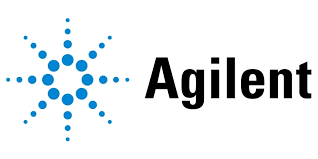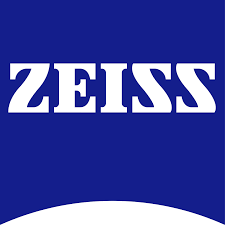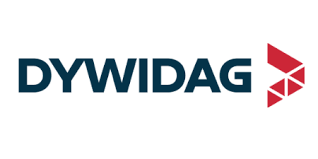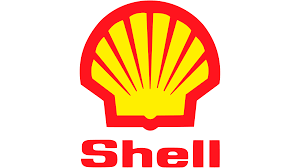Temperature Data Logger
Published Date: 02 June 2025 | Report Code: temperature-data-logger
Temperature Data Logger Market Size, Share, Industry Trends and Forecast to 2033
This comprehensive report examines the global Temperature Data Logger market, providing detailed insights into market overview, size, growth, segmentation, regional performance, leading companies, technological innovations, and product analysis. Forecast data from 2024 to 2033 are discussed to help stakeholders navigate anticipated trends, challenges, and opportunities in the evolving landscape. The report offers an in-depth evaluation to inform strategic decision-making.
| Metric | Value |
|---|---|
| Study Period | 2024 - 2033 |
| 2024 Market Size | $1.80 Billion |
| CAGR (2024-2033) | 6.2% |
| 2033 Market Size | $3.14 Billion |
| Top Companies | Sensitech, Inc., Gemini Data Systems |
| Last Modified Date | 02 June 2025 |
Temperature Data Logger (2024 - 2033)
Temperature Data Logger Market Overview
Customize Temperature Data Logger market research report
- ✔ Get in-depth analysis of Temperature Data Logger market size, growth, and forecasts.
- ✔ Understand Temperature Data Logger's regional dynamics and industry-specific trends.
- ✔ Identify potential applications, end-user demand, and growth segments in Temperature Data Logger
What is the Market Size & CAGR of Temperature Data Logger market in 2024?
Temperature Data Logger Industry Analysis
Temperature Data Logger Market Segmentation and Scope
Tell us your focus area and get a customized research report.
Temperature Data Logger Market Analysis Report by Region
Europe Temperature Data Logger:
Europe has established itself as a mature market with a strong emphasis on quality control and safety standards. With a market size expected to rise from 0.47 in 2024 to 0.82 by 2033, European countries continue to invest in cutting-edge temperature monitoring solutions to ensure compliance across various industries.Asia Pacific Temperature Data Logger:
In Asia Pacific, the market is witnessing rapid growth due to expanding industrialization and increased adoption of advanced monitoring technologies. From a market size of 0.37 in 2024, it is expected to grow to 0.65 by 2033. The region benefits from a large manufacturing base, improving infrastructure, and substantial investments in smart technology, making it a key growth driver in the global market.North America Temperature Data Logger:
North America remains one of the leading markets, with its market size projected to grow from 0.67 in 2024 to 1.16 by 2033. The region’s focus on technological integration, stringent regulatory standards in healthcare and food safety, and high investments in advanced infrastructure contribute significantly to market growth.South America Temperature Data Logger:
South America represents a smaller yet emerging market, with the market size increasing from 0.07 in 2024 to an anticipated 0.13 by 2033. Economic stabilization, rising quality standards, and growing awareness regarding regulatory compliance in critical sectors drive the adoption of temperature data loggers in the region.Middle East & Africa Temperature Data Logger:
The Middle East and Africa regions are emerging markets with promising growth potential. Market estimates indicate an increase from 0.22 in 2024 to 0.38 by 2033, driven by increasing industrial activity, governmental initiatives for modernization, and improved regulatory frameworks aimed at enhancing operational safety.Tell us your focus area and get a customized research report.
Temperature Data Logger Market Analysis By Product
Global Temperature Data Logger Market, By Product Type Market Analysis (2024 - 2033)
The product segment of the Temperature Data Logger market is broadly categorized into standalone, wireless, and multi-function data loggers. Standalone Data Loggers lead the market, registering a size of 1.11 in 2024 with a substantial share of 61.83%, and are forecast to reach 1.94 by 2033. Wireless Data Loggers, with a market size of 0.37 in 2024 and a share of 20.75%, are gaining traction due to increasing mobility and ease of installation. Multi-function Data Loggers represent a niche segment that recorded 0.31 in market size in 2024 and is expected to grow to 0.55 by 2033, accounting for a 17.42% market share. Each product type offers distinct features, enabling end-users to choose solutions that best fit their specific operational requirements. The continuous evolution in sensor accuracy and data processing capabilities further underpins the growth in this segment.
Temperature Data Logger Market Analysis By Application
Global Temperature Data Logger Market, By Application Area Market Analysis (2024 - 2033)
Application-wise, the Temperature Data Logger market is divided into key sectors such as healthcare, food industry, transportation, manufacturing, and others. In healthcare, devices have experienced substantial demand with a market size moving from 0.72 in 2024 to 1.26 by 2033, capturing a dominant share of 40.17% due to the need for precise monitoring in critical environments. The food industry segment, with a market size of 0.43 in 2024 and a share of 23.81%, relies on strict temperature controls to ensure safety and quality. Transportation and manufacturing segments, reflecting market sizes of 0.18 and 0.27 respectively in 2024, are expected to grow steadily, ensuring compliance with regulatory standards and reducing spoilage. The 'Others' category, although smaller at 0.20 in 2024, plays a crucial role in niche applications and is anticipated to witness proportional growth by 2033. This segmentation enables stakeholders to target investments and develop tailored solutions for specific industry requirements.
Temperature Data Logger Market Analysis By Technology
Global Temperature Data Logger Market, By Technology Market Analysis (2024 - 2033)
The technology segment in the Temperature Data Logger market is primarily bifurcated into digital and analog data loggers. Digital Data Loggers dominate the market with a robust presence, exhibiting a market size that grows from 1.45 in 2024 to 2.53 by 2033 and maintaining a commanding share of 80.7%. These devices leverage advanced microprocessors and enhanced data storage capabilities, making them ideal for real-time monitoring applications. In contrast, Analog Data Loggers, though smaller in scale with a market size of 0.35 in 2024 and a 19.3% market share, continue to be relevant in applications where simpler, cost-effective solutions are adequate. The ongoing shift toward digital transformation, coupled with improved connectivity and data handling, is expected to further consolidate the dominance of digital technologies in the coming years.
Temperature Data Logger Market Analysis By End User
Global Temperature Data Logger Market, By End-User Industry Market Analysis (2024 - 2033)
End-user segmentation of the Temperature Data Logger market encompasses industries such as food and beverage, pharmaceuticals, logistics, research and development, and other specialized applications. The food and beverage sector, with a market size climbing from 0.72 in 2024 to 1.26 by 2033, commands a significant share of 40.17% due to strict regulatory standards. Pharmaceutical applications also mirror this trend with a growth trajectory from 0.43 to 0.75 and a market share of 23.81%, driven by the need for precise environmental control. Logistics and research sectors, recording respective market sizes of 0.18 and 0.27 in 2024, play a crucial role in ensuring product integrity during transportation and development processes. Additionally, other end-user applications collectively contribute to the market by providing innovative uses in emerging fields, thereby complementing the overall diversification strategy within the industry.
Temperature Data Logger Market Trends and Future Forecast
Tell us your focus area and get a customized research report.
Global Market Leaders and Top Companies in Temperature Data Logger Industry
Sensitech, Inc.:
Sensitech, Inc. is a pioneer in advanced temperature monitoring solutions. Renowned for its innovative approach and comprehensive product portfolio, the company has established itself as a reliable partner in the global Temperature Data Logger market.Gemini Data Systems:
Gemini Data Systems specializes in cutting-edge data logging technologies and has earned a strong reputation globally through its commitment to excellence, continual product innovation, and responsive customer service.We're grateful to work with incredible clients.









FAQs
What is the market size of temperature Data Logger?
The global temperature data logger market is estimated at $1.8 billion, and it is projected to grow at a CAGR of 6.2%. This growth is driven by increased automation and rising demand for accurate temperature monitoring across various industries.
What are the key market players or companies in this temperature Data Logger industry?
Key players in the temperature data logger market include Thermo Fisher Scientific, Ametek, Inc., and Adafruit Industries. These companies are known for their innovative technology solutions and extensive product offerings in the data logging sector.
What are the primary factors driving the growth in the temperature Data Logger industry?
Primary growth factors include rising automation in industries, stringent regulations on food and drug safety, and increasing demand for temperature-sensitive products. Advancements in wireless technology and IoT integration also significantly contribute to market growth.
Which region is the fastest Growing in the temperature Data Logger?
North America is the fastest-growing region in the temperature data logger market, projected to increase from $0.67 billion in 2024 to $1.16 billion by 2033. This growth is attributable to high healthcare standards and technological advancements.
Does ConsaInsights provide customized market report data for the temperature Data Logger industry?
Yes, ConsaInsights offers customized market reports for the temperature data logger industry. Clients can request tailored insights based on specific needs and focus areas, ensuring relevant and actionable market intelligence.
What deliverables can I expect from this temperature Data Logger market research project?
From this market research project, you can expect detailed reports covering market size, growth forecasts, competitive analysis, and insights on trends. Data segmentation by regions and applications will also be included for thorough analysis.
What are the market trends of temperature Data Logger?
Current market trends include increasing adoption of wireless data loggers, developments in digital technology, and the emergence of multifunctional devices. There's also a focus on enhancing data accuracy and integration with cloud-based monitoring systems.
